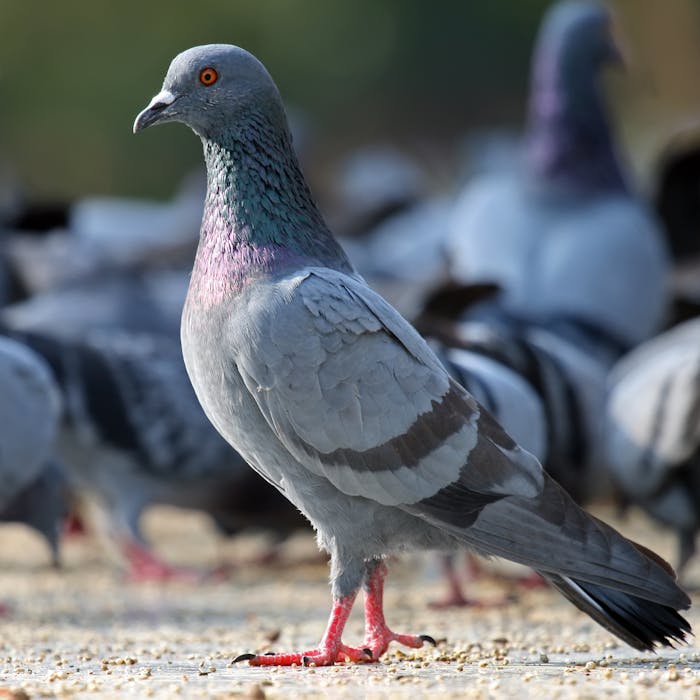
The feral pigeon, a human friend - and foe
The feral pigeon, found extensively in Britain, is descended from the rock dove, the first wild bird to be domesticated. Sometimes regarded as a pest, it has made itself quite at home with humans, despite occasional eradication attempts. In fact, these birds are both adaptable and rather clever.
There are an estimated 18 million feral pigeons in the UK, and they can breed up to up to six times a year.
Related to the less urbanised wood pigeon, the adult feral pigeon is smaller than its cousin. The neck is iridescent with green and purple. The wings are usually grey except for two distinct black wing-bars, although various other colourations are to be found, and the eyes and legs are red. Pale and ginger pigeons are quite frequently seen.
Whilst its ancestor the rock dove is adapted to nest on cliffs, feral pigeons have very successfully adapted to the built environment, frequenting ledges on buildings and other structures in our towns and cities, and expressing a liking for perching on monuments and statues.
Pigeons were originally domesticated to provide a source of food, and have also been trained as homing birds and message carriers - a role found particularly valuable during wartime. They have also been the basis of the sport of pigeon racing, whereby specially trained homing pigeons are released to return to their homes over a carefully measured distance. People who breed pigeons are commonly referred to as pigeon fanciers.
Many town and city authorities have found themselves battling with pigeons to control their urban activities, including the creation of large amounts of excrement, and the risk of them being an occasional disease vector to humans. Combined with crop and property damage, pigeons are largely considered a nuisance these days, with steps being taken in many municipalities to lower their numbers or completely eradicate them. Trafalgar Square in London has been a particular haunt of pigeons, and prompted a set of measures to deter them.
Endearingly, pigeons pair up to mate for life. Pigeon chicks are called squabs, and they remain in the nest for up to two months before fledging.
Feral pigeons generally live for three to six years, though some make it to 10 years old. They are also thought to be amongst the more intelligent of birds, experiments having shown that they are self-aware and can recognise themselves in a mirror.
Further reading
Links to external websites are not maintained by Bite Sized Britain. They are provided to give users access to additional information. Bite Sized Britain is not responsible for the content of these external websites.
